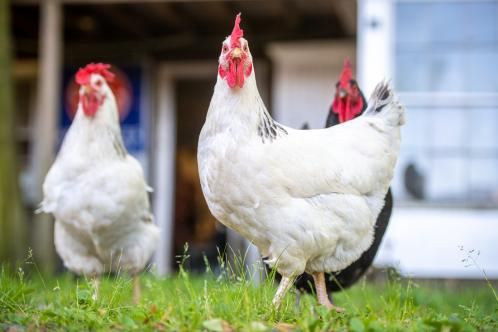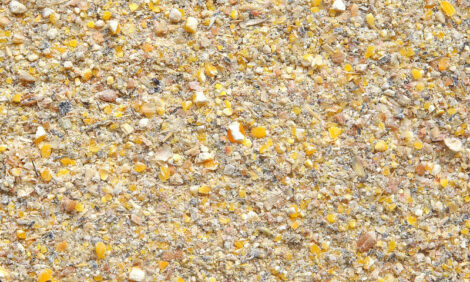



Interdisciplinary university student team improving poultry biosecurity through data science
University of Maryland students developed and coded an algorithmic technique to identify unregistered farms, a tool that will help USDA-APHIS improve regional biosecurity
© Edwin Remsberg Photography
Under the guidance of FIRE Assistant Clinical Professor Dr. Thanicha Ruangmas, four FIRE Summer Fellows, Mishti Relan, Anna Lazarus-Hall, Janna Chapman, and Shanil Kothari, all sophomores from various colleges within UMD, collaborated virtually with each other and APHIS, to build this data collection, analysis and visualization tool for use by the agency.
“Students were to collect information from online registries and social platforms to determine the extent of grey markets and backyard poultry farms,” said Ruangmas. Using the R Studio integrated programming environment -- open-source software available to the public for free -- the students developed and coded an automated software tool that could search available public databases and public directories online to identify existing farms, and for this project, specifically farms that had an interest in live chickens, baby chicks, or fresh eggs, Ruangmas said.
“We agreed to identify grey markets for chickens and live poultry because diseases from the unregulated producers have been a problem in Maryland,” Ruangmas said. With the start of the COVID-19 pandemic, there was a rapid increase in interest in maintaining backyard chicken flocks for eggs and sales -- small scale farmers who may or may not register with state agencies. Unregulated chickens at markets have the potential to bring diseases and biosecurity issues to large-scale commercial producers, and other small flocks.
The students were tasked with not only finding farms in Maryland, but also in Virginia and Delaware and in total, they were able to identify the geo-coordinates of 1,493 farms in the region. That information was compared to state registration information obtained from the state’s Department of Agriculture to determine the extent to which unregistered farms have proliferated.
“This type of information helps us with our outreach efforts -- to know who’s out there in the event of a biosecurity crisis,” said Beth Gaston, liaison to UMD from USDA-APHIS, who worked with FIRE to initiate the project. “It helps us target a response effort, but it also helps us provide preventative instruction.”
“Not only did we provide them the data, but also the techniques and methodologies that can be used in the future in other areas of animal and plant science,” said Mishti Relan, a sophomore computer science major.
The FIRE Summer Fellows, who were part of the FIRE Sustainability Analytics research group, developed the tool for scraping and managing the online data -- an endeavor that came with its own set of challenges surrounding privacy terms of use, confidentiality protocols, and the ethical treatment of data from online and available state sources -- and also employed other interactive web apps for data visualization of their collected information.
“The students mapped all of the farms that they found, creating an online interactive app to identify the farms and where they are located in proximity to one another. Click on the map and you get all of the information about the farm,” said Ruangmas. “If there was a disease outbreak, APHIS could locate the farm where it occurs and notify farms within a given radius. The map shows all of the farms and their public information in that radius that would need to be informed.”
“For most of the semester, I was looking at spreadsheets of data, but learning to use the Shiny app to visualize the information was like magic,” said Relan. “The data became visually aesthetic and it was a cool moment to see the data like that, and what we could achieve with it.”
The FIRE program, a three-semester sequence with the option of a summer fellowship, works with incoming first-year students of all majors and backgrounds to introduce them to real world research experience and career development.
“These students work closely with faculty members for about 20 hours a week to accelerate the research project,” said Ruangmas. “This is more proof of concept that these students did -- they developed methodologies that APHIS or another state agency in collaboration, could use to help the USDA better understand the issues around biosecurity.”
“This was my first real experience where I had to use my brain for something that wasn’t just a class assignment,” said Anna Lazarus-Hall, sophomore in material science and engineering. “And it was interesting to work on a project in collaboration with a client, getting feedback, and working through that process.”
Creating a path for career development that involves real-world experience is also the goal of Gaston’s work with UMD and the FIRE program. “The passion to expose students to real, complicated research problems is important. So much knowledge is shoved into our brains and we sometimes only regurgitate it, rather than really understanding that knowledge, creating and building with it,” Gaston said. “To see them do that at the freshman and sophomore level is so powerful. The students who do that sort of thinking -- that’s our future.”
To learn more about the FIRE program and their work with first-year students, go to www.fire.umd.edu.









